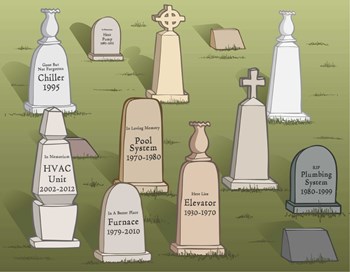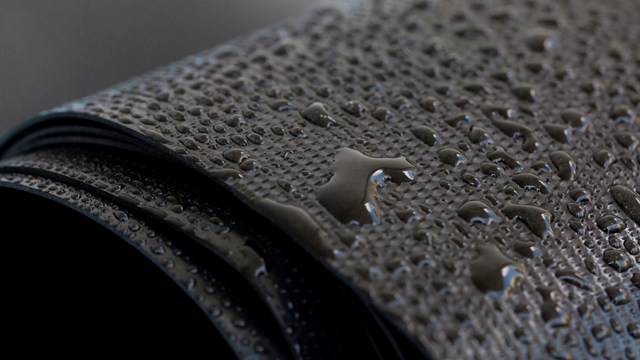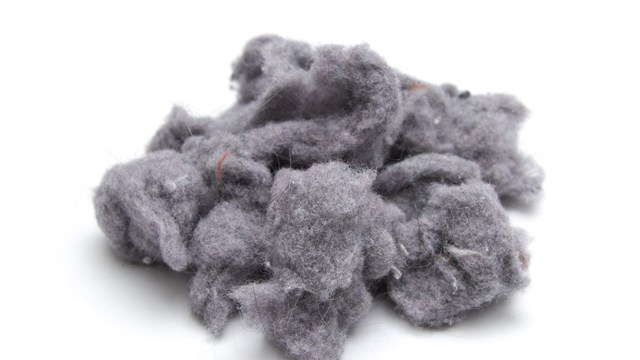
Nothing lasts forever, and though you can’t predict the moment a piece of building equipment will break down, you can prepare for it. Even the toughest boiler, HVAC unit, or elevator will eventually tucker out and need major repairs, or just give up the ghost and have to be replaced. And with New Jersey’s penchant for hot summers and cold winters, parts of a building sometimes must be replaced more frequently than might usually be expected elsewhere in the nation.
That’s why working estimates of usable life spans of various building systems can be very helpful to management when planning short- and long-term budgets and capital improvement projects. For some communities, these estimates are a part of a regular evaluation of the facilities. Whether or not this evaluation is a part of your community’s management process, knowing about the life spans and maintenance needs of your building’s systems should be a part of your understanding of your community. Having such knowledge can help you prepare for the worst and in doing so, also help you save some money.
Finite Lives
The longevity of any building system depends upon many factors including the type of system, be it the roof or the windows or the elevators or the plumbing, how often it is used, how old it is, how well it’s been cared for, and even the effects of inclement weather. It’s axiomatic that the best-run buildings will have every pump on every system labeled, and a record kept of each servicing and replacement of every part on each piece of equipment or building system.
Generally speaking, hot water heaters in multi-family buildings will last for a decade or so. The life spans of HVAC components vary depending upon the type of system, but usually they will last for 15 to 30 years. Trash compactors have a shorter life span than, say, a boiler, and often last for only 8 to 10 years. Major plumbing components can last 50 to 60 years, but when they are close to the end of their usable life, management should account for the fact that the equipment will need to be replaced soon.
In New Jersey, the housing stock in condominium communities varies enough to affect the conversation around HVAC systems. “If it’s a big enough building that they have cooling towers for instance, you should expect 25 years for that major component,” says Robert N. Roop, P.E., CBIE, owner and president of Criterium-Lockatong Engineers in Rosemont. “It’s something though that can be as short as five years if they don't take care of it and take proper measures to treat the water that’s continuously circulating through the device. They’ll have a shorter lifetime if they’re at the Shore, because they’re attacked by the salt spray, of course. You can also get towers that are made of fiberglass and plastic that hold up very well in those circumstances,” he says.
It’s a typical refrain in business and property management that the more you spend now the more you save later, and that goes double for HVAC units. “The higher-efficiency equipment, when we’re talking about the big cooling towers and chillers—the modern ones all have variable frequency drives on them—which means older conventional equipment is sort of bang-bang, on-off. It’s a big current and it runs at full speed. Today, one of the ways to save energy with this big equipment is to start it slowly, and it doesn’t frequently run on its full capacity. Instead of flooring the accelerator in your car, you flutter the pedal a little bit,” says Roop. On the other hand, since the new units are digitally-controlled, over time, maintenance costs might be a little higher because of the need to replace control boards. Of course, the money saved on energy makes that well worth it, he says.
It’s conventional wisdom that the more attention and upkeep you give to something, the longer it will last. But tender, loving care does not go as far with HVAC units, since efficiency standards have changed so drastically in the last 10 years. Since those new systems have different designs that are more difficult and costly to repair, they don’t last as long as some of those old 100-year old boilers, some of which are still around, even though they might be repaired over and over. But, that newfangled system is so much more efficient that it pays for itself within just the first five years.
Elevators typically last for 30 to 40 years, with proper maintenance. “It’s just one of those things where 30 to 35 years it stops being worth it to keep it along. Elevators have service contracts that take care of maintenance for a while, typically 20 to 25 years, but after that you’re going to have to replace it at a certain point,” says Daniel Iles, a senior associate at Massachusetts-based On-Site Insight, which serves most of New Jersey.
Even though we think of elevator use as pretty straightforward, their wear and tear can definitely vary building-by-building. “The cab depends on how rough the use is. We see elevators in very high-end buildings with a lot of fancy, polished metal, they may have a short lifetime if the owners are banging around in there and trying to move furniture. If the building has a freight elevator, then the passenger elevators are going to survive a lot longer,” says Roop.
Up on the Rooftop...
Roofing is one the most carefully inspected part of a building in reserve studies. Obviously, it’s a very important part of a structure, but a poorly-maintained roof can lead to all sorts of horrible, costly issues.
“No matter what material we’re looking at, it’s one of those 20-year time frames. They have 30-year shingles, 25-year shingles, but we’re always kind of looking to 20 to 25 years” in reserve studies, says Iles. “It’s one of those things that can vary drastically depending on the weather conditions. If there’s lots of standing water on the roof, that’s huge. Moisture is going to have a huge impact, as well as sun exposure. If it’s really shaded, north facing, you’re going to get a lot of organic growth on there. On the other hand, a roof that gets a ton of sun, there’s going to be UV damage,” he says. Experts recommend that roofs of co-ops and condos be checked at least annually for any defects, holes, leaks or any other problems. All problems should be immediately fixed, before they become major problems. What material you use can make all the difference in later maintenance costs with roofing.
“There’s different grades of shingles, the 20-year warranty, the 5-year warranty. You can buy a heavier shingle which will have a longer warranty and will last longer,” says Jeanne Allen, AIA, a principal at Kipcon, which has offices in New Brunswick.
And while they may not seem like a building system per se, building exteriors are crucial to maintaining the health of the building’s structure. Concrete foundations and exterior structures like balconies need to be monitored over the years. “The snowball effect of getting a little crack, can contribute to more water infiltration. We usually look at a brand new brick elevation, if it’s well done, it can last a very long time. You’re not even really going to have to touch it for 10 or 15 years when you have to do caulking work. Down the road-a-ways, anything older than that, you’ll have some brick cracking and replacing,” says Isles.
Even with a formidable winter, New Jersey features plenty of outdoor pools. Ignoring a pool system will wear it down quickly. Not cleaning the pool regularly and having too much chlorine in the water will damage the pool; daily management techniques should be known by building staff, who can be taught by vendors if needed. And while it might seem like not much harm could be done from improper care for a pool, consider that a complete system overhaul for a pool could cost a bundle. On the low end, it might cost a building as little as $5,000, or as much as $100,000, depending upon the pool’s size.
“Typically, you have a service contract with a pool maintenance company and they keep an eye on the equipment. A lot of times if you go for a cheaper piece of equipment, you end up paying for it to be maintained. The more expensive filters and pumps, those require less maintenance dollars. Do you spend the money on maintaining it, or on a higher quality piece of equipment?” says Allen.
Proper maintenance is the most important of all the factors that can extend the life span of any building system. Other factors such as foot traffic may not be able to be controlled, nor of course, can the weather. So make sure your building staff takes care of what it can.
Scheduling Upgrades
A building’s administrators should collaborate with their service pros to determine whether it’s better to repair a failing system or replace it. Saving money for residents is part of the job of a board, and that’s where capital reserve studies come in. As part of capital reserve studies, major systems in the building are evaluated to determine how much usable life they have left. This is done through a visual inspection of the building—by professionals referring to manufacturer’s specifications on the system—
and through evaluating information on problems and repairs done to the systems.
Also for a reserve study, maintenance professionals who service the building will be consulted to evaluate the longevity of the system and to help give recommendations. While there are clear industry standards, variable factors like weather, climate, and level of use has to be taken into account. “In the industry there are references that are published for rules of thumb or default expected useful life. Fannie Mae publishes them, the National Association of Home Builders, too---for an individual piece of equipment, it can vary a great deal, and the professional judgment of the inspector comes into play. But generically to get started there are rules of thumb, which are published,” says V. Campbell Grant, P.E, a senior engineer at Criterium Engineers, a northeastern firm which does work in the Garden State.
The frequency with which a building conducts capital reserve studies varies from community to community and is partly dependent upon the size and type of community. These studies are usually done by an engineering firm or another firm which specializes in such work. Experts recommend doing a capital reserve study of a co-op community every 5 to 10 years and doing a reserve study every 5 years for a condo community.
Thanks to Moore’s Law and the speed of change in the computer era, some electrical systems, such as security systems and entry systems, may need to be replaced more frequently than other building systems. And some residents want greater security or more convenience, so changes to the system are made to make things easier, such as by upgrading to a keyless entry. And due to technology constantly morphing, a building’s computer network might have a life span of only 15 or 20 years.
Jonathan Barnes is a freelance writer and regular contributor to New Jersey Cooperator. Editorial Assistant Tom Lisi contributed to this article.






Leave a Comment